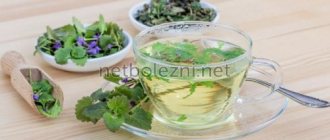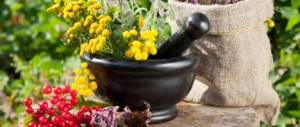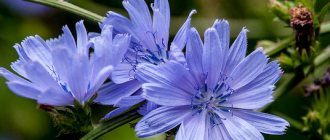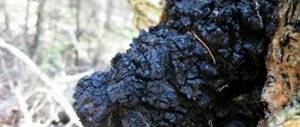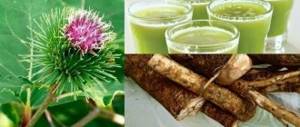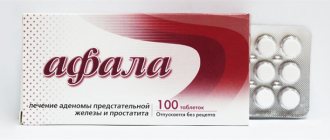The herbal mixture, which is used for diseases of the genitourinary system, mainly the urinary organs, is intended for brewing and drinking, and is called kidney tea. As a rule, it contains leaves of Orthosiphon stamina and other diuretic herbs that facilitate kidney function and relieve inflammation. There are several varieties of herbs, but it is the cat's whisker, as this plant is also called, that activates the removal of toxins from the body and has an antispasmodic effect.
Before you start taking kidney tea, you should find out its beneficial properties, study the instructions and find out what contraindications exist for use. Many patients with kidney diseases are interested in whether it is possible to drink kidney tea to normalize processes in the body. Experts accept this as an auxiliary treatment, but you cannot prescribe it yourself.
Beneficial features
When using the collection, you must follow the instructions, otherwise you may harm the body instead of the expected benefits.
Its basis is the staminate orthosiphon, but to enhance its effect, there will be other plants in the tea. The drink normalizes the functioning of the kidneys, removes stones and harmful substances from them.
Its action helps get rid of problems with the urinary system. Doctors often prescribe it to pregnant women to prevent swelling of their limbs.
This is an excellent drink to completely cleanse the body of toxins, and therefore improve health and appearance.
The composition contains many beneficial essential oils, microelements, and essential vitamins.
Characteristics of kidney tea as a medicinal plant
Orthosiphon stamen (as bud tea is called by botanists) is harvested in mid-autumn. The torn leaves are dried and placed in bags that do not obstruct the air flow.
Stems, as well as insufficiently dried leaves, have no healing power: always be careful what exactly you buy and brew. Ready-to-use raw materials are stored in dry, well-ventilated areas: excessively humid air is harmful to the orthosiphon.
Interesting fact. Orthosiphon is also popularly called a cat's whisker, referring to the long stamens that protrude from the flowers of this subshrub, like the whiskers of our furry friends.
Indications and contraindications for use
The very name of this drink partially speaks of its main purpose, but the kidney collection is used for many diseases:
- Gout;
- Urethritis;
- Cystitis;
- Diabetes;
- Cholecystitis;
- Kidney failure.
The tea is used following the doctor's recommendations, and in a certain quantity for each age category.
This is a panacea for many organ diseases, but its benefits do not always outweigh the possible harm. For example, it should not be consumed if a person shows signs of hypersensitivity to this drink or if its use is accompanied by allergic reactions.
Kidney tea is contraindicated:
- For gastritis and gastric ulcer;
- Children who have not yet reached 3 years of age;
- When combined with alcoholic beverages.
Patient reviews
Ekaterina, 26 years old “During pregnancy I encountered a problem such as swelling of the legs. It got to the point that I couldn’t put on my shoes in the evening. My legs hurt a lot. At the doctor's appointment, lingonberry leaves were prescribed. I bought them. But drinking them is not very pleasant. The taste is bitter. I had to drink the pack. Once again I came to the pharmacy for lingonberry leaves. There weren't any. And the pharmacist recommended orthosiphon stamen.”
Olga, 37 years old “I drank kidney tea for several months during pregnancy, of course, taking breaks from treatment. It’s good that I listened to the gynecologist, who said that kidney tea during pregnancy should be drunk for a long time to avoid the appearance of edema.”
Instructions for use
When buying this tea at a pharmacy, you should not neglect the instructions for use, because it functions as a full-fledged medicinal product.
According to the instructions for use, its use should look like:
- Use 2 bags or a teaspoon of tea leaves per 200 milliliters of boiling water.
- Leave for no more than 15 minutes in a water bath.
- Cool the drink for 45 minutes.
- Consume half an hour before meals, and for cholecystitis half an hour after meals.
When drinking this tea, strict dosage must be observed. Children aged 3 to seven years are given a teaspoon of the drink 2 times a day, from seven to twelve years - 2 teaspoons 2 times a day, from 12 to 14 years - a third of a glass 2 times a day, and from 14 for adults you need to take half a glass of infusion 2 times a day.
Before taking herbal tea, you should consult a doctor; he will decide what dose a particular person needs and whether it will be safe for this person.
How to drink kidney tea correctly on different occasions
Methods of preparing diuretic herbs that differ from each other give different results for different diseases. The instructions for the tea may not contain complete information on how to prepare kidney tea for each specific disorder. A doctor can give such recommendations when prescribing the use of cat whiskers. But knowing them is useful for every person who intends to drink diuretic tea.
For inflammation of the bladder
To stop the development of the inflammatory process of the bladder, it is necessary to prepare a decoction. To do this, you need to take several ingredients in equal quantities: dry leaves of Orthosiphon staminate, bearberry leaves, and also add a pinch of dry mint leaves. Gently mix all ingredients, then 2 tsp. Pour the resulting mixture into a thermos and pour 500 ml of boiling water. After 10 hours, the infusion must be filtered and drunk throughout the day in small sips. The entire volume of the decoction is designed for one day of administration.
For swelling and difficulty draining fluid
To facilitate the movement of fluid in the body and relieve increasing swelling, a decoction of kidney tea should be prepared in a steam bath. For this, 1 tsp. Add the collection to two glasses of hot water and place in a water bath. The broth should boil for no more than 5 minutes. After this, you need to let it brew for 3-4 hours and strain with gauze. You need to drink 100 ml of prepared tea before meals twice a day.
Urolithiasis disease
To reduce or completely dissolve kidney stones, kidney tea does not even need to be brewed, just pour boiling water over it. For a glass of water, 3 g of the mixture is enough, leave it for 30 minutes, then strain and add more boiling water to make the glass full. Divide the amount of drink in a glass into two parts and take one before meals. The next day you need to prepare a new amount of tea.
The same recipe for kidney tea is used in the treatment of cystitis.
Treatment of hypertension
To reduce and stabilize blood pressure using kidney tea, add 2 tbsp to 300 ml of boiling water. l. dried orthosiphon leaves. Then cover the container with a lid and let it brew for several hours. Then you need to strain the tea and drink 100 ml three times a day.
Contraindications to the use of orthosiphon stamen
Orthosiphon stamen has a unique composition that not every person can benefit from.
The above-ground part of the plant contains many components, and only a medical examination can show whether they are suitable for a particular person.
Contraindications for collecting with orthosiphon leaves:
- Tea containing this plant should not be used by people who have an individual intolerance to this plant or who are allergic to it.
- Often, tea that contains this plant is recommended to pregnant women for swelling in the later stages, but it should not be consumed in this situation.
- During lactation, you cannot take the drug, it contains leaves of Orthosiphon stamen.
- The plant is not recommended for use by children under 12 years of age, except in cases where the doctor permits.
We can conclude that it is necessary to be careful when handling a cat’s whisker:
- During pregnancy, breastfeeding;
- If it is going to be used on children;
- For allergies to grass and individual intolerance;
- If a person has gastritis, ulcers;
- When drinking alcoholic beverages.
In all other cases, the content of orthosiphon stamen in tea is allowed; it will have a maximum positive effect.
Main contraindications and possible harm of kidney tea
The official instructions for renal herbal tea based on orthosiphon staminate indicate the following contraindications for use:
- Hypersensitivity to the components included in the drug.
- Children under 12 years of age.
- Women during pregnancy and lactation.
It should be noted that many doctors prescribe tea to pregnant women and during the lactation period. The decision to use the drug in this category of patients can only be made by the attending physician due to the risk of certain complications.
People with low blood pressure should take herbal tea with caution. The same applies to patients with large kidney stones. People suffering from diseases of the cardiovascular system need to take medicinal tea under the supervision of a doctor.
Using the product in recommended doses has virtually no side effects. But since orthosiphon contains saponins, it should be taken in moderation. An overdose can cause eating disorders and dizziness.
The drug is not hypoallergenic. A side effect may occur, which manifests itself as an allergy.
Where can I buy this product?
The best place to purchase a kidney herb will be a pharmacy, as well as to purchase other herbs with a medicinal effect, because you can find high-quality, certified products there.
When purchasing, you should pay attention to whether there are instructions inside the package and what the expiration date is. People are often offered to buy medicinal herbs on the market, but such a purchase does not guarantee anything, because it is impossible to know whether the raw materials were collected correctly, how they were dried and stored.
You can also buy tea on the Internet, but the drink is not too expensive, and you don’t have to pay extra for its delivery.
Release form
In pharmacies, orthosiphon is usually sold in packages containing filter bags (there are ten or twenty of them per pack), as well as in the form of crumbly raw materials. Before purchasing, it would be a good idea to consult with a pharmacist or pharmacist regarding which manufacturer is best to give preference to. Remember: a high price is not always a clear indicator of quality!
Another significant recommendation. Carefully study the box and make sure that the manufacturer understands the term “kidney collection” - the composition of the herbs should be fully listed on the package. If, in addition to the plant we are describing, the product contains any other additives, refrain from purchasing until you are completely sure of their safety.
We make it at home
Each type of medicinal raw material can be stored independently, but with herbs for kidney collection it takes a long time to transport.
The main ingredient of the drink, orthosiphon stamen, cannot always be found in places suitable for this collection. At home, it is difficult to ensure the correct fermentation process of raw materials.
But if you collect plant leaves yourself, you need to learn how to do it correctly:
- Raw materials are collected in summer;
- Only the tops of the plant need to be cut off;
- For fermentation, it is necessary to lay the grass in a thick layer and press it down with a press;
- Leaves need to be dried at high temperatures, possibly in the sun.
Plants should be dried in a warm, dry and well-ventilated place. It is necessary to brew raw materials that you have collected yourself, following all the instructions for the same tea from the pharmacy.
If you prepare it correctly and consume this tea, it will quickly cleanse your body of everything unnecessary and help you forget about many problems.
It contains many components that are necessary for the body of every person, so its proper use will not harm anyone. It can be found in any pharmacy, it has a pleasant taste and aromatic qualities, which means you can drink it and improve your health with pleasure.
But in order not to cause even minimal harm to the body, before taking the drink you should consult a doctor and get competent recommendations.
Kidney tea is an affordable remedy for treating many diseases and strengthening the body.
How to prepare correctly
The plant is harvested in the summer. Under favorable weather conditions (hot and humid summer), harvesting is carried out up to 5–6 times per season. At this time, only the tops of the shoots (flesh) are collected, several centimeters of the stem and a couple of leaves are taken with it. The remaining leaves are collected in October, when they have formed and grown to 7–8 centimeters.
The collected raw materials must be dried. To do this, the orthosiphon is laid out on a flat surface, left in a ventilated area, and stirred regularly. Store cat whiskers in cotton or paper bags in a dry place. If all the rules for collection and storage are followed, then the staminate orthosiphon is suitable for use for 4 years.
Read all about spinach in this article
The advantage of this tea
Pharmacy shelves are filled with a large selection of different and herbal drugs. Most people appreciate the benefits of different teas. Kidney herbal tea acts as a primary or additional medicine and is used in complex treatment.
Compared to other drugs, it has a healing, multifunctional effect. It can have a positive effect on the kidneys and the entire body. Accordingly, provide support for the immune system. The fight against the disease will be faster and more effective.
The drink helps the normal functioning of the urinary system, removes toxins and stones from the body. This function is helped by trace elements, organic acids, vitamins and essential oils.
Let's look at the features of the drink:
- The diuretic actively fights swelling.
- The drink is rich in potassium, which helps actively remove harmful substances and excess fluid from the body.
- The diuretic acts as an antispasmodic.
- The galenic elements contained in the plant help the production of gastric juice.
- Tea increases appetite.
- Iron and magnesium improve the functioning of the circulatory system and lower white blood cells in the blood.
Kidney herbal tea, unlike other drugs, is suitable for pregnant women. For swelling and urinary problems, the doctor prescribes this drink.
The therapeutic effectiveness of the diuretic will increase significantly if you take the tea in combination with other herbal infusions: lingonberry leaves, bearberry, horsetail, birch buds.
What does kidney tea consist of?
The main component of kidney tea is the branched subshrub orthosiphon. It grows in Australia and Southeast Asian countries. It is customary to use only the top leaves of this plant.
The classic composition of kidney tea, in addition to orthosiphon, may include herbs such as cat's whisker and bearberry.
According to research, staminate leaves (in single composition) have the following beneficial substances:
- glycoside;
- wine acid;
- essential oil;
- fatty acid;
- selenium;
- iron;
- potassium;
- magnesium;
- calcium.
All the above-described substances in the composition are absolutely safe for the human body. They make up for the lack of useful microelements.
The most effective means
Pharmacies offer consumers a huge range of renal herbal teas with different effects. Let's consider the most well-known and effective diuretics used for inflammatory diseases of the urinary system and kidneys.
- Orthosiphon energetically expels urea, uric acid, chlorides, and lead salts from the body. It has an antispastic effect, is used for renal colic, increases the secretion of gastric juice, and enhances the secretion of bile. The drug is used for diseases: cystitis, lithiasis, stone formation, ischemic and hypertension, edema, inflammation of the gallbladder, chronic kidney disease. The medicinal drink is sold in pharmacies without a doctor's prescription.
- Herbal tea “Urophyton” reduces swelling, prevents the appearance of kidney stones, and reduces the risk of inflammatory processes in the urinary tract. The tea contains bearberry, birch, plantain leaves, licorice root, marigold, St. John's wort and horsetail. A doctor's prescription is not required to purchase the drink.
- The “Nefron” drink has an anti-inflammatory and disinfectant effect on the body. It leads to normalization of mineral metabolism and prevents the formation of stones. It is a diuretic, anti-inflammatory agent that actively fights various kidney diseases.
Tea consists of:- St. John's wort;
Lingonberries;
- knotweed;
- Corn silk;
- Goldenrod;
- Calendula;
- Nettle and mint;
- Calamus root.
- “Fitonephrol” is used in the treatment of kidney disorders. It has a strong analgesic, diuretic, antiseptic, and tonic effect. The composition of the drug includes: bearberry, peppermint, dill, eleutherococcus. The drink has a pleasant and aromatic taste.
Many girls use Fitonephrol tea as a means of losing weight. This is due to the diuretic effect, which quickly removes excess fluid and waste from the body. As a result, weight loss is observed. Fullness returns quickly; tea is not intended to combat fat deposits. Before you start drinking tea, it is better to consult a nutritionist.
Positive effects
The subshrub Orthosiphon staminate has a huge number of positive effects, among which the following is worth noting: a pronounced diuretic effect. In this case, increased diuresis does not lead to significant losses of potassium. Due to this unique property, the renal collection Orthosiphon can be considered a potassium-sparing diuretic drug. In addition to the diuretic effect, phenolcarbon compounds have a remarkable anti-inflammatory effect, which is why the renal collection can be used for kidney diseases such as glomerulonephritis, pyelonephritis, cystitis and urethritis.
The anti-inflammatory effect of orthosiphon is achieved by activating the local immune response, reducing venous stagnation, thereby reducing tissue swelling and improving microcirculation in the tissues of the kidneys and urinary tract. The drug has proven itself well in both acute and chronic inflammatory diseases. Kidney tea perfectly complements conservative therapy in the treatment of kidney stones.
Dried orthosiphon leaves, ready for infusion
Many doctors recommend the use of Orthosiphon kidney tea during pregnancy to relieve the woman’s body. Renal collection helps to gently, without increased load on the filtration glomerular apparatus of the kidneys, remove the main metabolic products and metabolites.
When orthosiphon is used together with the herbs bearberry and horsetail, the therapeutic effects of both drugs are enhanced. Kidney collection has proven itself in the treatment of edema syndrome of various etiologies, including those arising due to diseases of the urinary system and pathology of the liver.
Possible side effects
Kidney teas are effective natural medicines for the treatment and prevention of diseases of the kidneys and urinary system. But still, some components of the drug may have side effects and contraindications.
When starting to use the drink, read the instructions and main contraindications.
It should not be taken by people:
- With a pronounced form of heart or kidney failure;
- With intolerance to the presented ingredients contained in the drug;
- With stomach disease (ulcers, gastritis;.
- Children under twelve years of age.
Sometimes there are cases when the herbal mixture causes side effects in the form of: swelling, itching, hyperemia, rash, redness of certain areas of the skin.
To avoid bad consequences, you should consult a doctor (urologist or allergist). After conducting examinations, the doctor will determine the diagnosis and prescribe treatment.
Kidney tea: chemical composition and calorie content
The collection from the orthosiphon staminate looks like a mix of dried and crushed leaves and stems in color from greenish-brown to gray-green with yellowish and purple splashes. Orthosiphon contains substances that make it useful for the human body. This crop is even specially grown in many countries on plantations of medicinal plants.
This tea helps with various kidney diseases.
The beneficial qualities of the drink are due to the composition of the tea, which contains the presence of:
- tannins;
- essential oils;
- phenolcarboxylic acids;
- saponins;
- mesoinositol;
- flavonoids;
- orthosiphonin glycoside;
- potassium salts, other minerals and vitamins.
The calorie content of 100 g of dry raw materials is about 5 kcal. If sugar, honey or jam is not added to the finished drink, its calorie content is close to zero.
Kidney tea helps with many kidney and bladder diseases. In medicinal practice, only orthosiphon leaves are used. They are harvested in June or July, during the flowering time of the plant.
Indications for use of tea from the leaf of the plant
Tea has gained recognition in ancient and modern medicine. Finding it is not difficult nowadays.
Doctors prescribe the planned use of medicinal tea for the following problems:
- cholecystitis;
- cystitis;
- urolithiasis disease;
- diseases of the cardiovascular system, namely coronary heart disease, heart failure, hypertension and associated edema;
- chronic kidney diseases such as pyelonephritis;
- urethritis;
- gestosis;
- with exacerbation of kidney disease;
- to remove bile from the body.
In childhood, use only with a doctor's prescription and only specially developed products.
Methods of application
For diseases of the kidneys and other organs of the urinary system, tea is taken twice a day, before the main meal.
When using ready-made tea bags, you need to take 2 pieces per glass of boiling water, leave for at least 10-15 minutes, then squeeze out the contents of the bags well and dilute with boiled water 2 times. Drink 100 ml warm half an hour before meals.
The course of treatment is 14-21 days. It can be repeated if necessary. Before use, you need to stir the infusion a little
It is important to note that the prepared mixture is suitable for use within 48 hours
For the treatment of kidney diseases, cholecystitis and swelling due to circulatory disorders, only crushed raw materials are used. Pour 2 tablespoons of the plant into 250 ml of boiling water, leave for 45 minutes, then squeeze thoroughly.
The resulting infusion is diluted twice. For cholecystitis, drink 0.5 glasses three times a day before meals. The dosage for the treatment of pathologies is the same, only the infusion should be consumed before meals. The prepared solution is stored in a cool place for no more than 2 days.
If you have stones in the kidneys or gall bladder, cystitis, gout and rheumatism, you need to take 3 g of crushed orthosiphon, pour a glass of boiling water, leave for 20 minutes. Take 100 ml before meals.
In the acute stages of cystitis, pyelonephritis, glomerulonephritis, urethritis and other diseases of the urinary system, the infusion is prepared as follows: take 2 tablespoons of crushed raw materials for 0.5 liters of boiling water, infuse in a warm place for at least 8-12 hours, then filter well and drink 0.5 cup three times a day.
The duration of treatment depends on the stage and severity of the disease; it is determined by the doctor individually. You should not self-medicate, as this can cause unwanted complications.
During pregnancy and lactation
Orthosiphon is prescribed to pregnant women in urgent need; treatment is carried out exclusively under the supervision of a doctor. This remedy perfectly eliminates swelling and helps improve kidney function, especially effective from the second trimester.
The duration of treatment should not exceed 21 days, the dosage is the same as for ordinary patients. It is allowed to use infusions based on this plant during breastfeeding. However, in this case you need to be careful and make sure that the kidney tea contains only orthosiphon.
If it contains other medicinal plants, you must consult your doctor before starting treatment.
For children
Otrosiphon is not recommended for use in patients under 12 years of age. In all other cases, the dosage and duration of treatment are the same as for adult patients.
- https://medside.ru/ortosifona-tyichinochnogo-pochechnogo-chaya-listya
- https://nefroclinic.ru/narodnye-sredstva/chaj-ortosifona.html
- https://www.syl.ru/article/293139/ortosifon-tyichinochnyiy-pochechnyiy-chay-lechebnyie-svoystva-primenenie-i-protivopokazaniya
- https://urohelp.guru/lekarstva/pochechnyj-chaj-ortosifon.html
- https://zavarka.life/marki-i-brendy/ortosifon.html
Beneficial and healing properties of kidney tea
Can be purchased at a pharmacy.
In medicine, tea is widely used to treat many diseases:
- nephritis and pyelonephritis;
- cystitis, urethritis;
- gout;
- swelling;
- urolithiasis;
- diabetes mellitus;
- cholelithiasis and cholecystitis.
Orthosiphon acts as a strong diuretic, so it is used to remove excess fluid from the body. This tea is also useful for hypertension if it is caused by impaired kidney function.
The beneficial properties of kidney tea are also expressed in relieving spasms of internal organs. In addition, it is taken orally in the complex treatment of edema that occurs due to circulatory failure.
For women
Kidney tea from orthosiphon can provide invaluable help for cystitis and diseases of the genitourinary system in women.
This is the only herbal tea that can be used as prescribed by a doctor during pregnancy for swelling and high blood pressure.
For men
For men, orthosiphon is useful in complex therapy for the prevention and treatment of prostate adenoma, cystitis and other inflammatory diseases of the genitourinary system.
At different ages it affects the functioning of the kidney system differently.
In old age, drink:
- helps maintain normal blood pressure;
- cleanses the blood;
- reduces the risk of stroke and heart attack.
Its use does not affect the speed of perception, therefore it is not contraindicated for drivers and representatives of other professions where reaction speed is important.
Kidney tea for children – how is it useful and is it possible?
Children can be given orthosiphon kidney tea from the age of three.
In childhood, you can drink this for an hour from the age of 3.
- It has a beneficial effect in the complex therapy of acute and chronic kidney diseases.
- It is prescribed for cholecystitis to relieve pain and have a choleretic effect.
- Orthosiphon increases the secretion of gastric juice and increases the content of hydrochloric acid in it.
- The herb can be prescribed to children with gastritis with low acidity.
But it is important to take into account that its use is contraindicated if the gastrointestinal tract disease is accompanied by high acidity.
